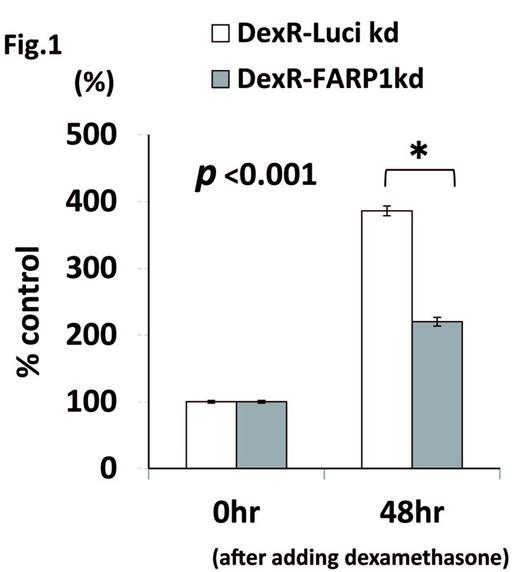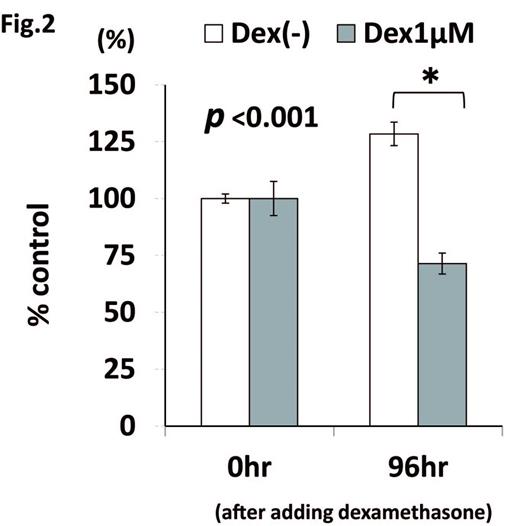Abstract
Recently, novel agents such as bortezomib and lenalidomide have been introduced for multiple myeloma (MM) treatment and have improved patients' survival drastically. However, dexamethasone remains a mainstay in the treatment of MM. Dexamethasone effectively induces tumor cell death when used for the initial treatment of MM. In addition, dexamethasone has a synergistic effect with novel agents and is hence used in combination with such agents. However, prolonged dexamethasone exposure may lead to drug resistance. To elucidate the mechanism of dexamethasone resistance, we generated a dexamethasone-resistant subline of the MM cell line RPMI8226. We cultured RPMI8226 cells with 1 µM dexamethasone for 7 weeks and established the dexamethasone-resistant cell line Dex-R. This cell line showed no difference in survival in the presence or absence of 1 µM dexamethasone. We then examined differences in gene expression between RPMI8226 and Dex-R cells using cDNA microarray. Expression of the FARP1 gene, which is a transforming growth factor beta (TGF-b) target gene in myeloma cells, was increased approximately 50-fold in Dex-R cells compared to that in RPMI8226 cells. In some myeloma patients who become chemoresistant, myeloma cells show high levels of FARP1 expression at the initial stage. FARP1 has a Rho-GEF domain and can associate with proteins on the cell membrane through the FERM domain. In the nervous system, FARP1 is involved in synaptogenesis via the activation of Rac1. Based on these observations, we hypothesize that Dex-R cells acquires dexamethasone resistance with an increase in the level of FARP1 expression via the activation of Rac1. To verify this hypothesis, we established inducible FARP1 knockdown Dex-R cells using the TET-ON lentiviral system. We cultivated these cells for 24 h with doxycycline and added 1 µM dexamethasone. A total of 48 h after adding dexamethasone, we measured cell viability using the MTS assay. We cultured Dex-R cells with a Rac1 inhibitor (NSC23766) and added dexamethasone 12 h later. FARP1 expression decreased to approximately 10% in FARP1 knockdown cells 24 h after the addition of doxycycline. Without dexamethasone, there was no difference in survival in the presence or absence of doxycycline. However, when cells were cultured with dexamethasone, the growth of FARP1 knockdown Dex-R cells was significantly inhibited compared with that of the control (Fig 1). Next, we examined the change in dexamethasone resistance on the addition of the Rac1 inhibitor. The number of cells increased after 96 h without dexamethasone. On the other hand, the number of cells significantly decreased when cultured with dexamethasone (Fig 2). These data suggest that resistance to dexamethasone in Dex-R cells was mitigated by the inhibition of Rac1. We conclude that the activation of Rac1 through FARP1 is one mechanism of dexamethasone resistance in MM.
No relevant conflicts of interest to declare.
Author notes
Asterisk with author names denotes non-ASH members.



This feature is available to Subscribers Only
Sign In or Create an Account Close Modal